Magenta is a beautiful shade of pink that can be seen in the plumage of some of the most eye-catching birds in the world. These birds stand out with their brilliant and vivid pink feathers that are sure to catch your attention.
Ranging from small finches to large birds of paradise, magenta colored birds can be found in various corners of the world. Their vibrant colors and unique characteristics make them a popular choice for bird watchers and enthusiasts alike.
In this article, we will take a closer look at some of the most stunning magenta colored birds, their habitats, and interesting facts about their lives.
1. Grey-Headed Swamphen
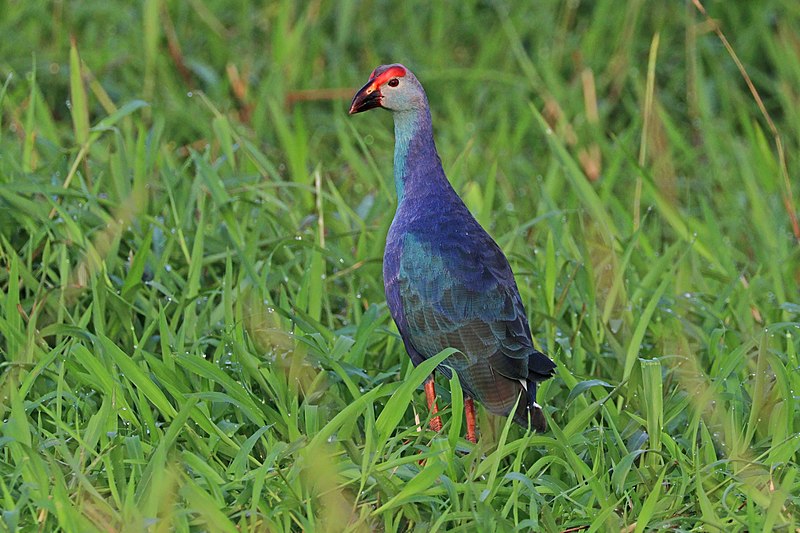
The Grey-headed Swamphen is a species of swamphen found in the Middle East, Indian subcontinent and parts of Southern China and Northern Thailand.
It was once thought to be a subspecies of the Purple Swamphen but recent studies have elevated it to full species status within its own superspecies.
Its distinguishing feature is its grey head which sets it apart from other members of this family. They are mainly aquatic birds that inhabit wetlands such as marshes, swamps, lagoons and ponds.
They feed on plants like leaves, seeds or fruit along with small aquatic prey like snails or insects.
Their nest can usually be found near water sources where they make an elaborate platform out of vegetation material for their eggs – up to six per clutch.Scientific classification:
| Kingdom | Animalia |
| Phylum | Chordata |
| Class | Aves |
| Order | Gruiformes |
| Family | Rallidae |
| Genus | Porphyrio |
| Species | P. poliocephalus |
Also Featured In: Common Birds in India, Common Birds in Kerala
2. Purple-Crested Turaco
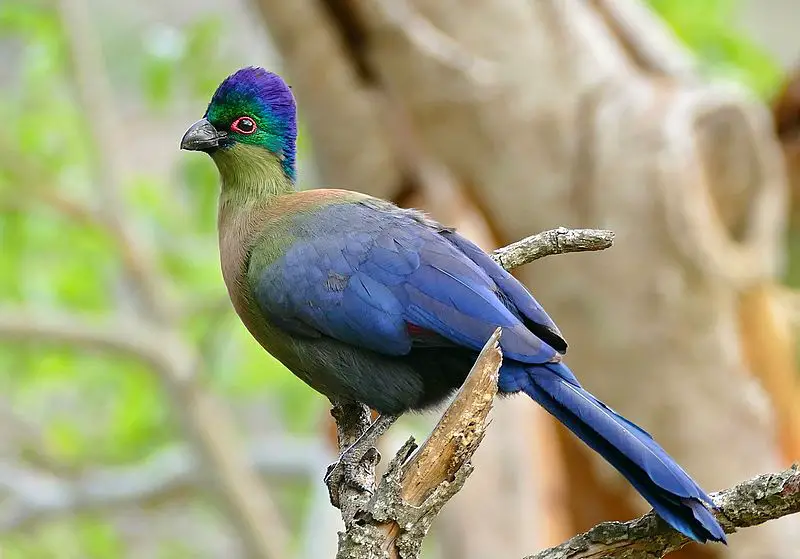
The Purple-crested turaco is a beautiful bird found in African countries like South Africa. It has striking plumage, with its head and crest being bright purple or blue-ish green.
Its wings, back, and tail are black while the underside of its body is white to cream colored. The bill of this species is yellow and it also has red eyes which stand out against its feathers.
This species prefers woodlands and habitats near streams or rivers where they can find plenty of food such as fruit, leaves, buds and nectar from flowers.
They often congregate in flocks when looking for food either on high branches or close to ground level within their habitat range areas across southern Africa’s woodland regions making them easily visible by observers whilst searching for these feathered beauties.Scientific classification:
| Kingdom | Animalia |
| Phylum | Chordata |
| Class | Aves |
| Order | Musophagiformes |
| Family | Musophagidae |
| Genus | Gallirex |
| Species | G. porphyreolophus |
Also Featured In: Common Kenyan Birds, Birds of KwaZulu-Natal
3. Purple Finch
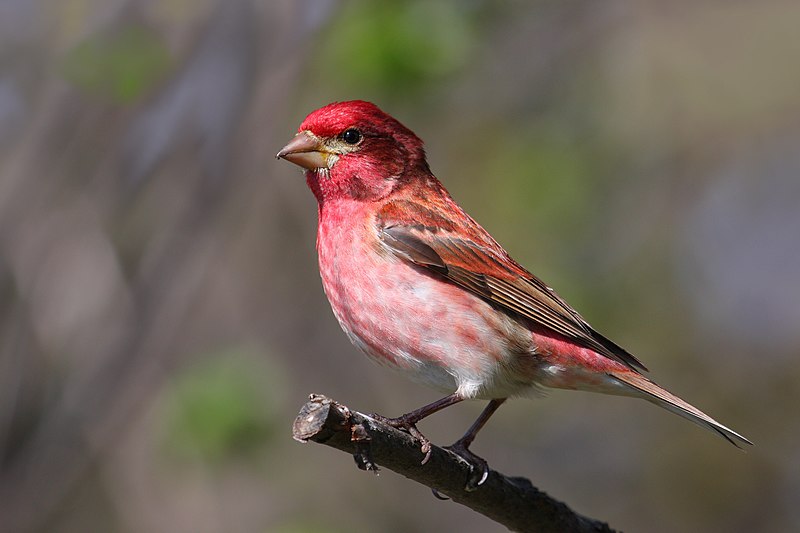
The Purple Finch is a species of finch from North America, belonging to the Fringillidae family.
It’s also known as an “American Rosefinch” due to its resemblance in color and size to some European rosefinches.
Their plumage ranges from pinkish-purple on their heads and wings, with a light brown underside.
They are small birds that measure about 5-6 inches long with short thin beaks for eating seeds and insects.
In addition, they have thick round bodies which help them stay warm during cold winters in the northern parts of their range.
The Purple Finch has adapted well over time making it easier for them to survive even though there are increasing threats posed by humans such as deforestation or habitat destruction caused by development projects near their habitats.Scientific classification:
| Kingdom | Animalia |
| Phylum | Chordata |
| Class | Aves |
| Order | Passeriformes |
| Family | Fringillidae |
| Subfamily | Carduelinae |
| Genus | Haemorhous |
| Species | H. purpureus |
Also Featured In: Georgia Birds, Most Common Winter Birds
4. Purple-Throated Woodstar
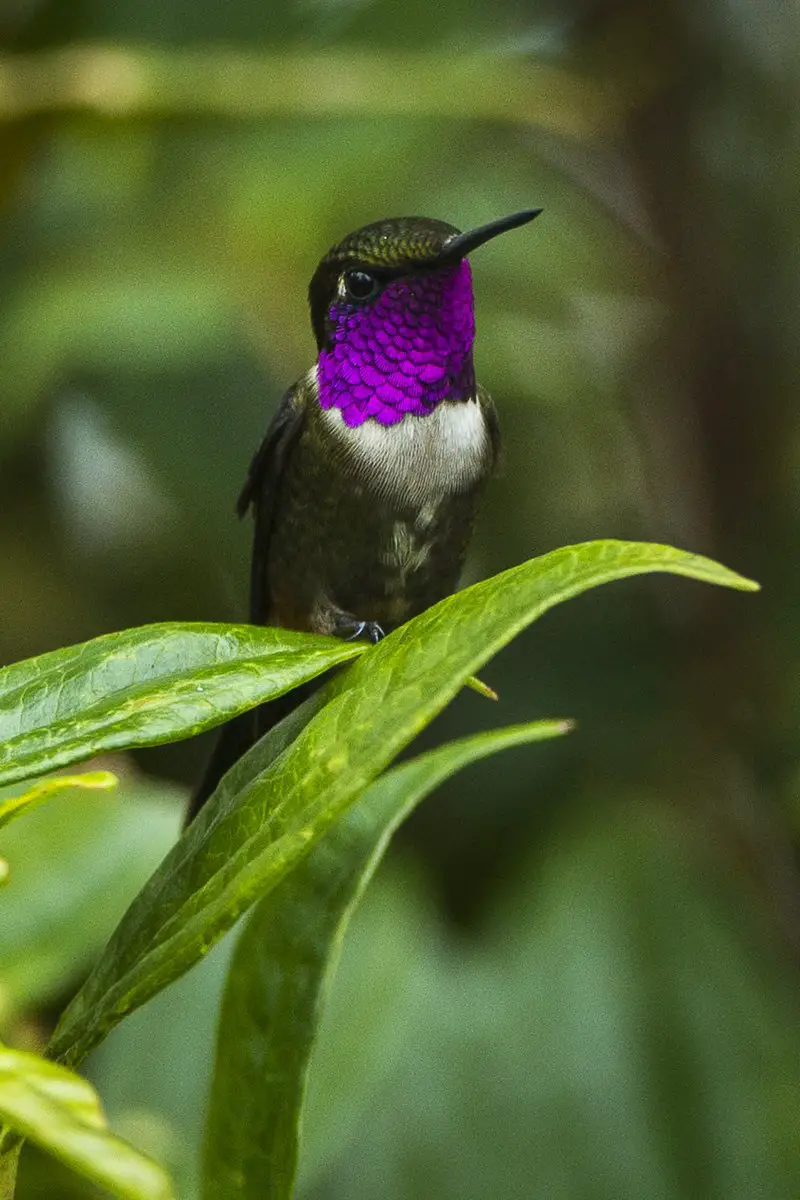
The Purple-throated Woodstar is an adorable species of hummingbird found in parts of Colombia, Ecuador and Panama. It belongs to the tribe Mellisugini and subfamily Trochilinae.
This attractive bird features a purple throat with white patches around it and yellow tipped wings, making them instantly recognizable among other hummingbirds.
They mainly feed on nectar from flowers but will also eat small insects for protein.
These tiny birds have high metabolic rates that require frequent feeding throughout much of their day in order to maintain energy levels; they can be seen hovering near flowering plants while quickly moving their wings up to 80 times per second.
The Purple-throated Woodstar plays an important role within its local ecosystem by providing valuable pollination services as well as controlling insect populations through predation – proving yet again how essential even the smallest creatures are for maintaining healthy ecosystems.Scientific classification:
| Kingdom | Animalia |
| Phylum | Chordata |
| Class | Aves |
| Order | Apodiformes |
| Family | Trochilidae |
| Genus | Philodice |
| Species | P. mitchellii |
Also Featured In: Hummingbirds Species,
5. Purple Martin
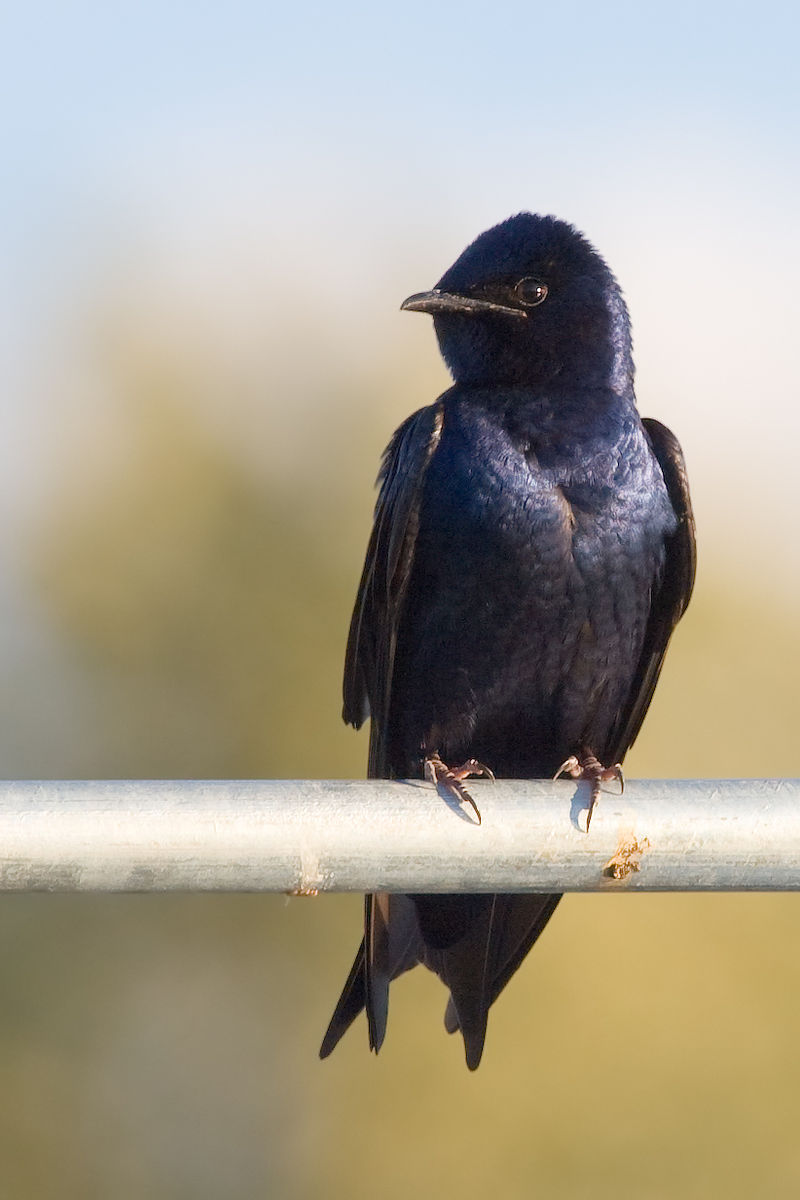
The Purple Martin is a beautiful passerine bird in the swallow family, and is the largest of its kind in North America.
It has dark blackish-blue feathers that have an iridescent sheen which can make them appear blue or deep purple depending on the light; they may even look green.
These birds are quite social creatures and often build communal roosts with multiple nests, having as many as hundreds of individuals living together at once.
They feed mainly on flying insects such as flies, moths, wasps and bees.
Their habitats include areas near bodies of water like lakes or rivers where there’s plenty for these birds to eat all year round.
The Purple Martin is truly an amazing species worth protecting.Scientific classification:
| Kingdom | Animalia |
| Phylum | Chordata |
| Class | Aves |
| Order | Passeriformes |
| Family | Hirundinidae |
| Genus | Progne |
| Species | P. subis |
Also Featured In: Swallows Species, Birds That Live in Colorado
6. Purple-Crowned Fairywren

The Purple-crowned fairywren is a species of bird belonging to the Australasian wren family, Maluridae. It is endemic to northern Australia and stands out due its large size compared to other members of its genus.
Breeding males have an impressive purple circle of crown feathers which gave rise to their scientific name “coronatus”, meaning crowned in Latin.
Recent genetic evidence has shown that this species consists on two distinct populations: one residing in Eastern Australia near Queensland and another further west around Northern Territory’s coastlines.
They feed mainly on insects but can also be seen feasting on fruits or seeds found among shrubs or bushes during dry seasons when food sources are scarce.
This beautiful Australian native will surely captivate you with its stunning plumage.Scientific classification:
| Kingdom | Animalia |
| Phylum | Chordata |
| Class | Aves |
| Order | Passeriformes |
| Family | Maluridae |
| Genus | Malurus |
| Species | M. coronatus |
Also Featured In: Wrens Species,
7. American Purple Gallinule
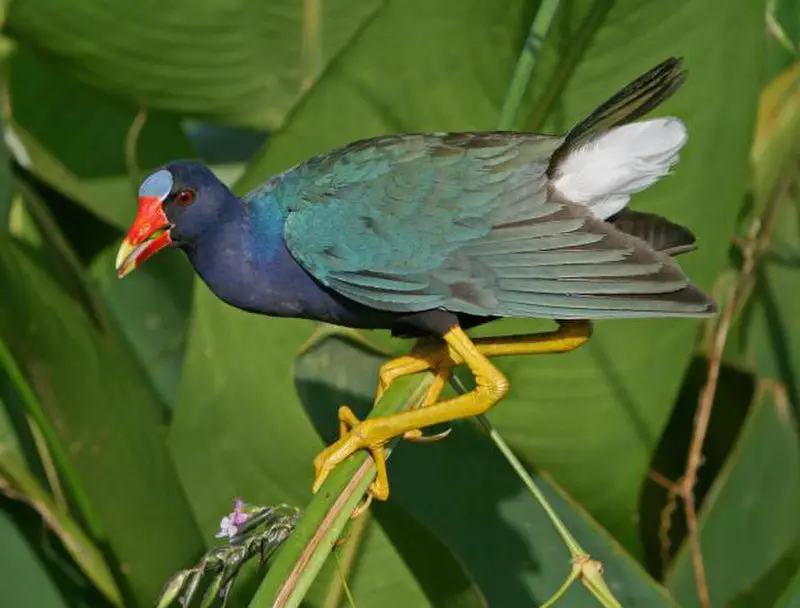
The American purple gallinule is a stunning bird found in North and South America. This species belongs to the order Gruiformes, which contains cranes, rails and crakes.
The family Rallidae classifies it as a rail species with its scientific name being Porphyrio martinica.
It is also known locally as the yellow-legged gallinule due to its striking plumage of greenish blue feathers on wings, back and tail along with bright red legs and bill.
Its environment includes freshwater marshes, swamps or paddy fields where these birds feed mostly on plants like water lilies or small invertebrates such as insects or molluscs.
These beautiful creatures are threatened by habitat destruction especially for agricultural purposes but conservation efforts are helping them survive despite this threat.Scientific classification:
| Kingdom | Animalia |
| Phylum | Chordata |
| Class | Aves |
| Order | Gruiformes |
| Family | Rallidae |
| Genus | Porphyrio |
| Species | P. martinicus |
Also Featured In: Florida Birds, Blue Birds You’ll Found around Us
8. Purple Starling
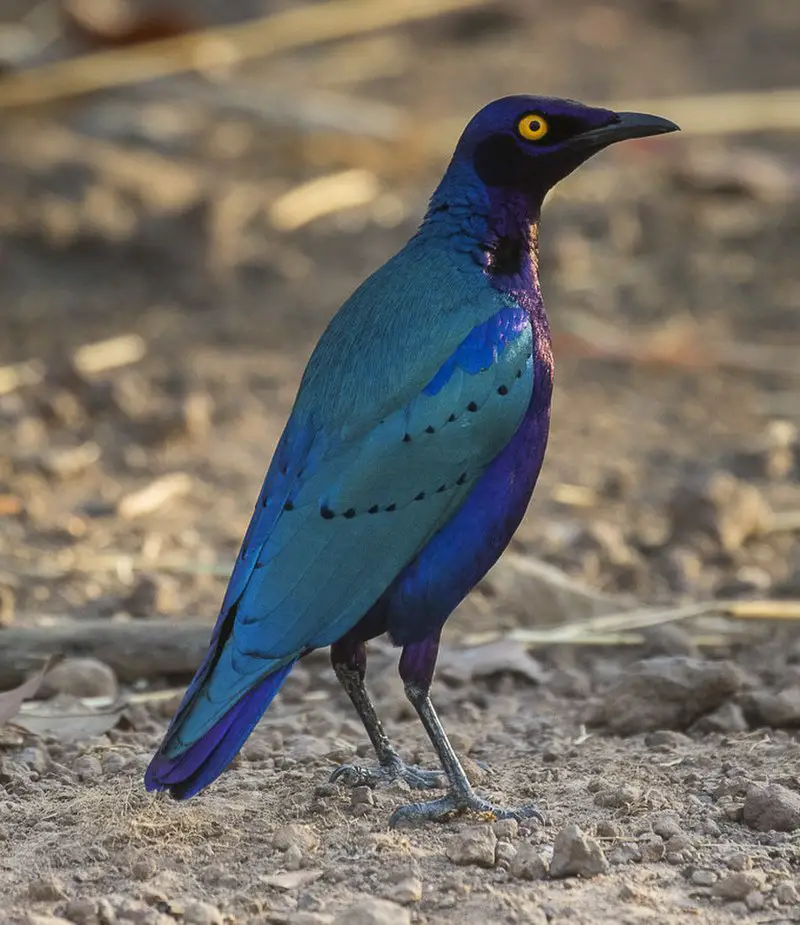
The purple starling is a species of bird belonging to the family of starlings. It has a striking metallic purple head and body, measuring up to 22-23 cm long with stocky features.
Found in tropical Africa from Senegal eastwards all the way to Sudan and Kenya, they inhabit open woodland areas as well as cultivated lands.
These birds are sociable creatures who form large flocks during their nomadic movements across landscapes.
They feed on insects, fruit and other small invertebrates found along their flight paths or near trees where they perch at night for roosting purposes.
The Purple Starling stands out amongst its peers due its vibrant coloration which helps it blend in seamlessly into various habitats while also providing protection against potential predators.Scientific classification:
| Kingdom | Animalia |
| Phylum | Chordata |
| Class | Aves |
| Order | Passeriformes |
| Family | Sturnidae |
| Genus | Lamprotornis |
| Species | L. purpureus |
Also Featured In: birds of purple,
9. Purple Honeycreeper
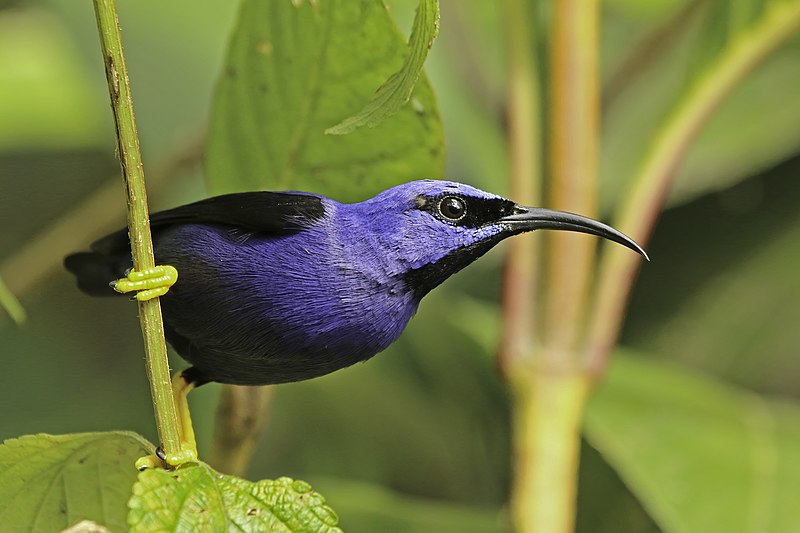
The Purple honeycreeper is a vibrant and beautiful bird found in the tropical New World from Colombia to Brazil, as well as on Trinidad and Tobago.
It belongs to the tanager family Thraupidae and was formally described by Swedish naturalist Carl Linnaeus in 1758.
This colorful species has an iridescent purple body with dark wings, yellowish legs, a black tail tip and beak, blue crown patch on its head ,and white spots under its wings.
They mainly feed on nectar or small insects such as spiders but also sometimes eat fruits like bananas or papaya when available.
The Purple Honeycreeper’s plumage makes it one of nature’s most striking birds.Scientific classification:
| Kingdom | Animalia |
| Phylum | Chordata |
| Class | Aves |
| Order | Passeriformes |
| Family | Thraupidae |
| Genus | Cyanerpes |
| Species | C. caeruleus |
10. Purple Grenadier
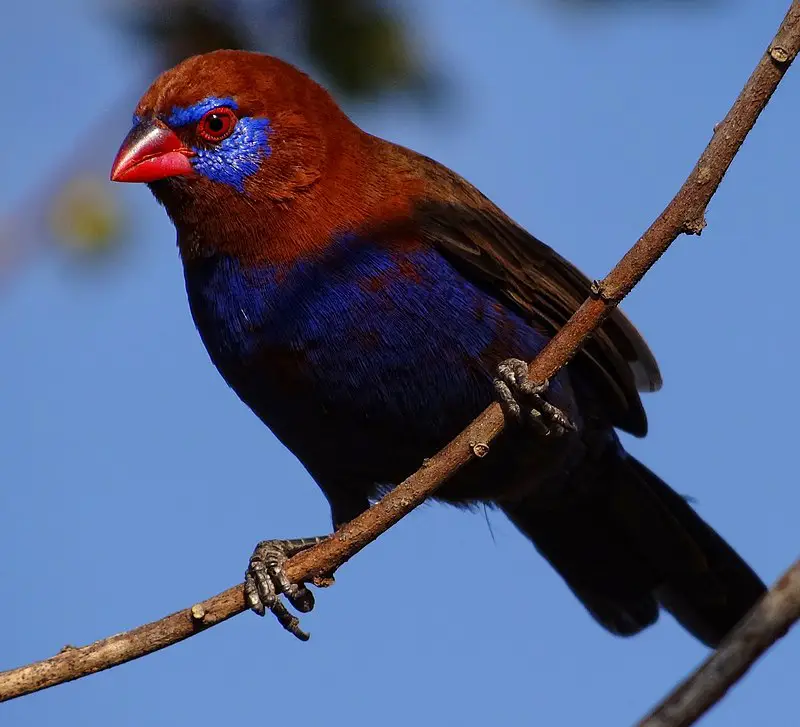
The Purple Grenadier is a stunning bird native to eastern Africa. It measures around 13.3 cm in length, and has an impressive black tail that stands out against its other vibrant colours.
Adult males have cinnamon-coloured heads with blue patches surrounding the eye, while their rumps are purplish blue and underparts violet-blue with variable rufous patches.
Females lack these bright features but still possess a beautiful plumage of grey and brown tones throughout the wings and body feathers.
Their red bill makes them easily recognizable amongst other birds of similar size within their habitat range.Scientific classification:
| Kingdom | Animalia |
| Phylum | Chordata |
| Class | Aves |
| Order | Passeriformes |
| Family | Estrildidae |
| Genus | Granatina |
| Species | G. ianthinogaster |
Also Featured In: Birds You’ll Find in Kenya Safari,
11. Purple-Backed Thornbill
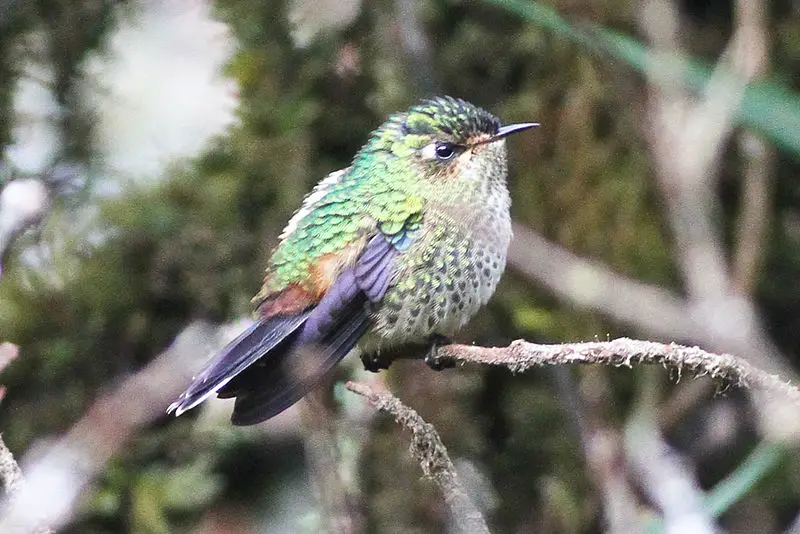
The Purple-backed Thornbill is a species of hummingbird belonging to the “coquettes” tribe Lesbiini. It can be found in Bolivia, Colombia, Ecuador, Peru and Venezuela.
This bird has four subspecies recognized: R. m. microrhynchum, R. m. viridigaster and two which are considered doubtful (R. m Andicola & albiventre).
The Purple-backed Thornbill shares its genus with the Black-Backed Thornbill (R dorsale).
It features an overall purple coloration on its back along with white underparts and greenish wings; males have black heads while females lack this feature but present yellow around their eyes instead as well as red spots near their throats.
These birds feed from small plants such as flowers or tree sap using their long curved bill for reaching into tiny crevasses where they also nest at times.
In conclusion, this vibrant hummingbird will surely amaze you when spotted due to it’s colorful plumage.Scientific classification:
| Kingdom | Animalia |
| Phylum | Chordata |
| Class | Aves |
| Order | Apodiformes |
| Family | Trochilidae |
| Genus | Ramphomicron |
| Species | R. microrhynchum |
12. Purple Cochoa
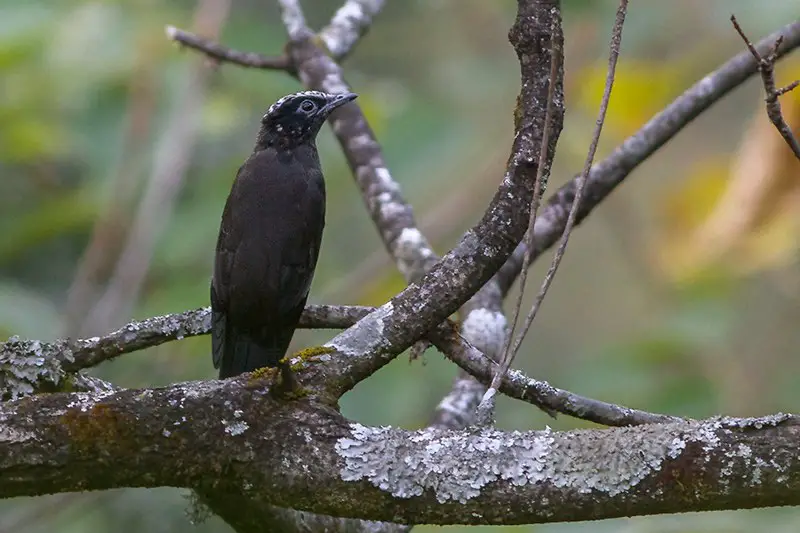
The Purple Cochoa is a stunningly beautiful bird native to the temperate forests of Asia. It has an eye-catching purple plumage, with its back being dark and chest light grey in colour.
This elusive species is known to be quite quiet and shy, so it can often go unnoticed while perched motionless on the canopy.
It’s believed that this bird belongs either to the thrushes family (Turdidae) or Muscicapidae (Old World flycatchers).
The Purple Cochoa prefers inhabiting dense forested areas where it can remain hidden from predators as well as potential intruders.
Its fascinating appearance makes it a great addition to any avian enthusiast’s collection – plus they make for lovely pets too.Scientific classification:
| Kingdom | Animalia |
| Phylum | Chordata |
| Class | Aves |
| Order | Passeriformes |
| Family | Turdidae |
| Genus | Cochoa |
| Species | C. purpurea |